Discover the fascinating traditions and beliefs surrounding mince pies and their connection to good luck during the Christmas season. From their historical origins to their symbolic significance, mince pies have become a staple holiday treat enjoyed by many.
Contents
- 1 The Evolution of Mince Pies: From Savory to Sweet
- 2 The Symbolism and Origins of Mince Pies
- 3 Mince Pie Superstitions and Traditions
- 4 The Tradition of Leaving Mince Pies for Santa
- 5 Mince Pies: A Delightful Christmas Tradition
- 6 Conclusion
- 7 FAQ
- 7.1 Is it good luck to eat mince pies on Christmas?
- 7.2 What are the origins of mince pies?
- 7.3 What is the symbolism behind mince pies?
- 7.4 Are there any superstitions or traditions associated with mince pies?
- 7.5 How have mince pies evolved over time?
- 7.6 Why do we leave mince pies out for Santa?
- 7.7 Why are mince pies a beloved Christmas tradition?
- 8 Source Links
Key Takeaways:
- Eating mince pies on Christmas is believed to bring good luck according to historical traditions.
- The origins of mince pies can be traced back to the 11th century and their recipe was brought back by Crusaders from the Middle East.
- The number of mince pies consumed is thought to correlate to the amount of luck in the following year.
- Mince pies have evolved from being savory and meat-filled to sweet and fruit-filled.
- Mince pies hold religious symbolism, with their ingredients representing the gifts given to baby Jesus by the Wise Men.
The Evolution of Mince Pies: From Savory to Sweet
Mince pies have undergone a remarkable transformation over the years, transitioning from their savory origins to the sweet treats we enjoy today during the holiday season. In the early days, these pies were filled with meat, often mutton or beef, combined with alcohol and three key spices, symbolizing the gifts of the Wise Men. The crust was typically shaped in a coffin or cradle, reflecting the religious significance of the nativity scene.
As time went on, the meat was gradually phased out, and the recipe transformed into a sweet mincemeat filling made with a delightful blend of fruits, spices, and sometimes suet. The pastry exterior became more refined and took on the circular shape that is now synonymous with mince pies. The evolution of mince pies reflects changing tastes and culinary preferences, as well as the shifting cultural significance of these festive treats.
Today, mince pies are a beloved part of holiday traditions, enjoyed by many as a symbol of the Christmas season. They are often baked with love and care, with families passing down cherished recipes through generations. The sweet and fragrant flavors of the mincemeat filling, combined with the buttery and flaky pastry, create a delightful sensory experience that is eagerly anticipated each year.
| Evolution of Mince Pies | Key Characteristics | ||
|---|---|---|---|
| Savory Mince Pies | – Meat-filled | – Shaped like a coffin or cradle | – Symbolic of the nativity scene |
| Sweet Mince Pies | – Meat removed from the recipe | – Sweet mincemeat filling with fruits and spices | – Circular pastry shape |
The evolution of mince pies from savory to sweet reflects the changing tastes and traditions associated with Christmas. These delectable treats continue to be enjoyed as a festive food, bringing joy and delight to the holiday season.
The Symbolism and Origins of Mince Pies
Mince pies hold a special place in Christmas traditions and are steeped in cultural beliefs and customs. The ingredients used in the filling of mince pies carry deep symbolic meanings that can be traced back to religious origins. Cloves, cinnamon, and nutmeg, commonly found in mince pies, represent the gifts presented to baby Jesus by the Wise Men. These spices are considered precious and serve as a reminder of the value of the gifts brought to honor the birth of Christ.
Furthermore, the shape of a star on top of most mince pies also holds religious significance. It is believed to symbolize the guiding star that led the Wise Men to the stable where Jesus was born. The star serves as a reminder of the divine light that illuminated their path and led them to witness the miraculous event.
“The spices in mince pies represent the precious gifts of the Wise Men, while the star-shaped pastry symbolizes the guiding star that led them to the birthplace of Jesus.”
The origins of mince pies can be traced back to the Middle East, where the recipe was brought to Britain by Crusaders in the 13th century. From there, it spread as a beloved Christmas tradition across the world, adapting to different cultures and incorporating unique variations.
| Symbolism | Origins | Spread of Tradition |
|---|---|---|
| Spices representing gifts | Middle East, Crusaders | Beloved Christmas tradition worldwide |
| Star-shaped pastry | Religious significance | Adaptation to different cultures |
As you indulge in a delicious mince pie this Christmas, take a moment to appreciate the cultural beliefs and legacy that have shaped this beloved holiday tradition. The symbolism and origins of mince pies add to the richness and depth of the Christmas season, reminding us of the profound significance behind seemingly simple treats.
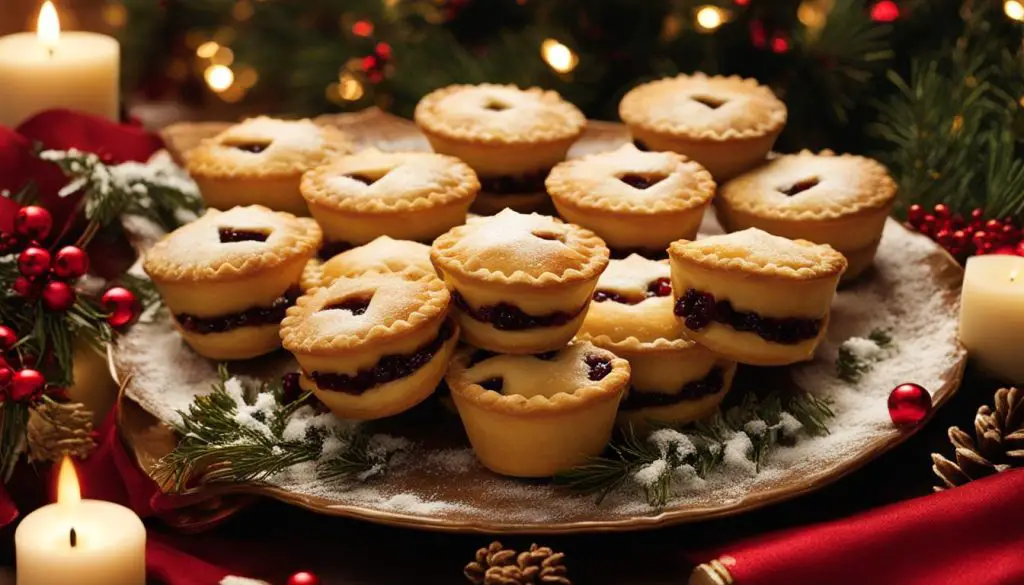
Mince Pie Superstitions and Traditions
When it comes to holiday superstitions, mince pies have their fair share of customs and beliefs surrounding them. These traditions add an element of intrigue and mystique to the enjoyment of these delectable treats during the Christmas season.
Mince Pie Superstitions
- Stirring the mincemeat mixture in a clockwise direction is believed to bring good luck.
- Eating a mince pie on each of the twelve days of Christmas is thought to bring luck for the year ahead.
- It is customary to make a wish when eating the first mince pie of the festive season.
These superstitions highlight the special significance that mince pies hold for many people during the holiday season.
Mince Pie Traditions
“The tradition of eating mince pies on Christmas dates back centuries and has evolved to become a cherished part of festive celebrations,” explains Sarah Johnson, a holiday traditions expert.
One popular tradition associated with mince pies is the practice of leaving them out for Santa Claus on Christmas Eve. This custom is believed to have originated from the Netherlands, where children would leave food and drink in exchange for gifts. In many households, a mince pie, along with a glass of milk or sherry, is placed near the Christmas tree to provide Santa with the nourishment he needs during his long night of delivering presents.
These traditions not only add to the joy and excitement of Christmas but also create a sense of wonder and anticipation for children around the world.
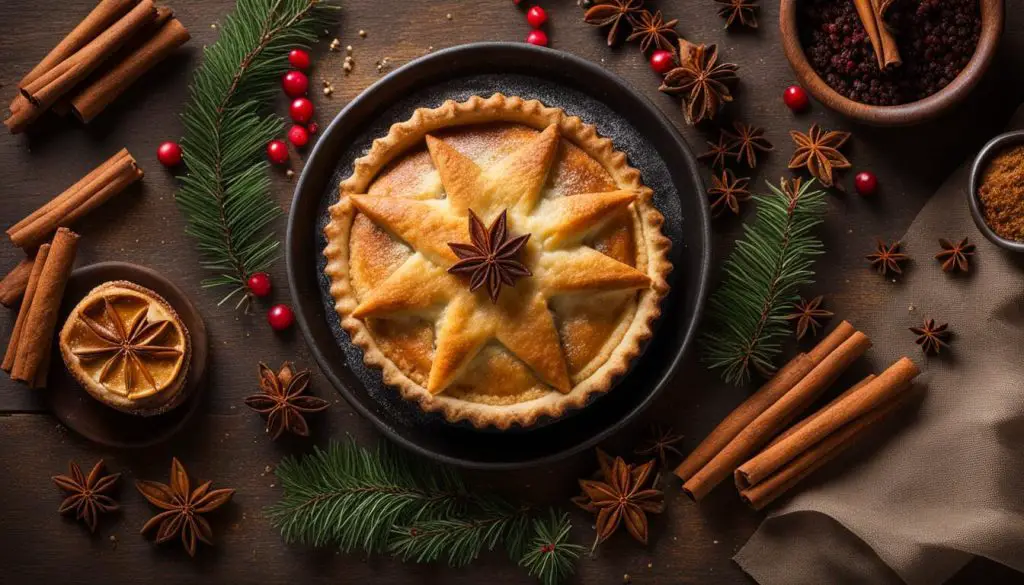
| Traditional Ingredients | Modern Ingredients |
|---|---|
| Meat (mutton or beef) | Fruits (raisins, currants, apples) |
| Alcohol | Spices (cinnamon, cloves, nutmeg) |
| Three spices symbolizing the gifts of the Wise Men | Suet (optional) |
“The history of mince pies dates back centuries and has evolved over time. Whether it’s the symbolism of the original ingredients or the transformation into a sweet, fruity treat, mince pies hold a special place in the hearts of many during the holiday season.” – Christmas Enthusiast
The Symbolism of Mince Pies
Mince pies are not only delicious, but they also hold symbolic meanings. The ingredients used in mince pies, such as cloves, cinnamon, and nutmeg, represent the gifts given to baby Jesus by the Wise Men. The star-shaped pastry on top of most mince pies symbolizes the star that guided the Wise Men to the stable where Jesus was born. These symbols add a deeper layer of meaning to the enjoyment of mince pies, making them more than just a tasty treat.
The Tradition of Leaving Mince Pies for Santa
One cherished tradition associated with mince pies is leaving them out for Santa Claus on Christmas Eve. This tradition is believed to have originated from the Netherlands, where children would leave food and drink in exchange for gifts. The practice eventually merged with the custom of leaving treats for Santa Claus. In many households, a mince pie, along with a glass of milk or sherry, is placed near the tree to provide Santa with the nourishment he needs during his long night of delivering presents. This tradition adds to the excitement and magic of Christmas for children around the world.

Leaving mince pies for Santa is not only a gesture of appreciation but also a way to honor the spirit of giving and generosity that is central to the Christmas season. It is a tradition that brings joy and anticipation to children who eagerly await the arrival of Santa Claus. In addition, this act of leaving mince pies serves as a symbol of gratitude for the gifts and blessings received throughout the year.
As families come together to celebrate Christmas, the act of leaving mince pies for Santa becomes a shared experience that reinforces the spirit of unity and togetherness. It is a tradition that has been passed down through generations, creating a sense of continuity and connection with the past. By participating in this tradition, families can create lasting memories and strengthen the bonds that make the holiday season so special.
Mince Pies: A Delightful Christmas Tradition
Mince pies have become synonymous with Christmas and are a beloved holiday tradition for many. These delectable treats, with their rich, fruity filling and buttery pastry, are enjoyed as a delightful festive food during the holiday season. Whether homemade or store-bought, mince pies are a must-have on many Christmas tables, adding to the joy and warmth of the holiday season.
The tradition of mince pies dates back centuries and has evolved over time. Originally, mince pies were filled with meat, along with alcohol and spices, symbolizing the gifts of the Wise Men. However, the recipe gradually changed, and nowadays, mince pies consist of a sweet filling made with fruits, spices, and sometimes suet, encased in a pastry exterior. Despite the transition from savory to sweet, mince pies continue to hold a special place in festive celebrations.
One cherished tradition associated with mince pies is leaving them out for Santa Claus on Christmas Eve. This custom, believed to have originated from the Netherlands, adds to the excitement and magic of Christmas for children around the world. In many households, a mince pie, along with a glass of milk or sherry, is placed near the tree to provide Santa with the nourishment he needs during his long night of delivering presents.
As people gather to celebrate and exchange gifts during the holiday season, the tradition of sharing and indulging in mince pies adds to the festive spirit. Whether you believe in the superstitions and traditions surrounding them or simply enjoy their delicious flavors, mince pies are a delightful Christmas tradition that brings joy to many.
Table: Mince Pie Ingredients
| Ingredient | Symbolism |
|---|---|
| Fruits (e.g., raisins, currants, apples) | Abundance and generosity |
| Spices (e.g., cloves, cinnamon, nutmeg) | Symbolize the gifts of the Wise Men |
| Suet (optional) | Richness and indulgence |
| Pastry | Encasing and celebrating the sweet filling |
The table above showcases the traditional ingredients used in mince pies and their symbolic meanings. The combination of fruits, spices, and suet (if used) creates a rich and flavorful filling, while the pastry exterior adds a delightful crunch. These ingredients come together to create a festive treat that encapsulates the spirit of Christmas.
Conclusion
Mince pies hold a special place in Christmas traditions and holiday customs. From their rich history to their symbolic meanings, these delicious treats have become an integral part of the festive season. Whether you follow the superstitions and traditions associated with mince pies or simply enjoy their sweet and fruity flavors, indulging in a mince pie is a delightful way to embrace the holiday spirit.
As you gather with loved ones and celebrate the joyful traditions of Christmas, don’t forget to include mince pies on your holiday table. Their evolution from savory to sweet showcases the adaptability of this beloved festive food. Whether you choose to bake your own or purchase them from a store, mince pies are sure to bring joy and delight to your Christmas celebrations.
So, this Christmas, take a moment to savor the flavors and history encapsulated in a mince pie. Whether you’re continuing a long-standing family tradition or starting a new one, the presence of these delectable treats will add warmth and charm to your holiday festivities. From the cultural significance to the delightful taste, mince pies truly embody the spirit of Christmas traditions and customs.
FAQ
Is it good luck to eat mince pies on Christmas?
According to historical beliefs and traditions, eating mince pies on Christmas is thought to bring good luck. The number of mince pies you eat correlates to the amount of luck you’ll experience in the following year.
What are the origins of mince pies?
The origins of mince pies can be traced back to the 11th century, when Crusaders brought back recipes and spices from the Middle East. They were originally filled with meat, but over time, the recipe transitioned into a sweet filling made with fruits, spices, and sometimes suet.
What is the symbolism behind mince pies?
The ingredients used in mince pies are said to represent the gifts given to baby Jesus by the Wise Men. The shape of a star on top of most mince pies also carries religious significance, representing the star that guided the Wise Men to the stable.
Are there any superstitions or traditions associated with mince pies?
Yes, there are several superstitions and traditions associated with mince pies. It is believed that stirring the mincemeat mixture in a clockwise direction brings good luck. Eating a mince pie on each of the twelve days of Christmas is thought to bring good luck for the year ahead. However, cutting a mince pie with a knife can bring bad luck.
How have mince pies evolved over time?
Mince pies have evolved from being savory to sweet. In the early days, they were filled with meat, alcohol, and spices. The crust was often shaped in a coffin or cradle. Nowadays, mince pies consist of a sweet filling made with fruits, spices, and sometimes suet.
Why do we leave mince pies out for Santa?
Leaving mince pies out for Santa Claus on Christmas Eve is a tradition believed to have originated from the Netherlands. Children would leave food and drink in exchange for gifts. The practice eventually merged with the custom of leaving treats for Santa Claus.
Why are mince pies a beloved Christmas tradition?
Mince pies have become synonymous with Christmas and are a beloved holiday tradition for many. They are enjoyed as a delightful treat during the holiday season, with their rich, fruity filling and buttery pastry. Whether homemade or store-bought, mince pies are a must-have on many Christmas tables.

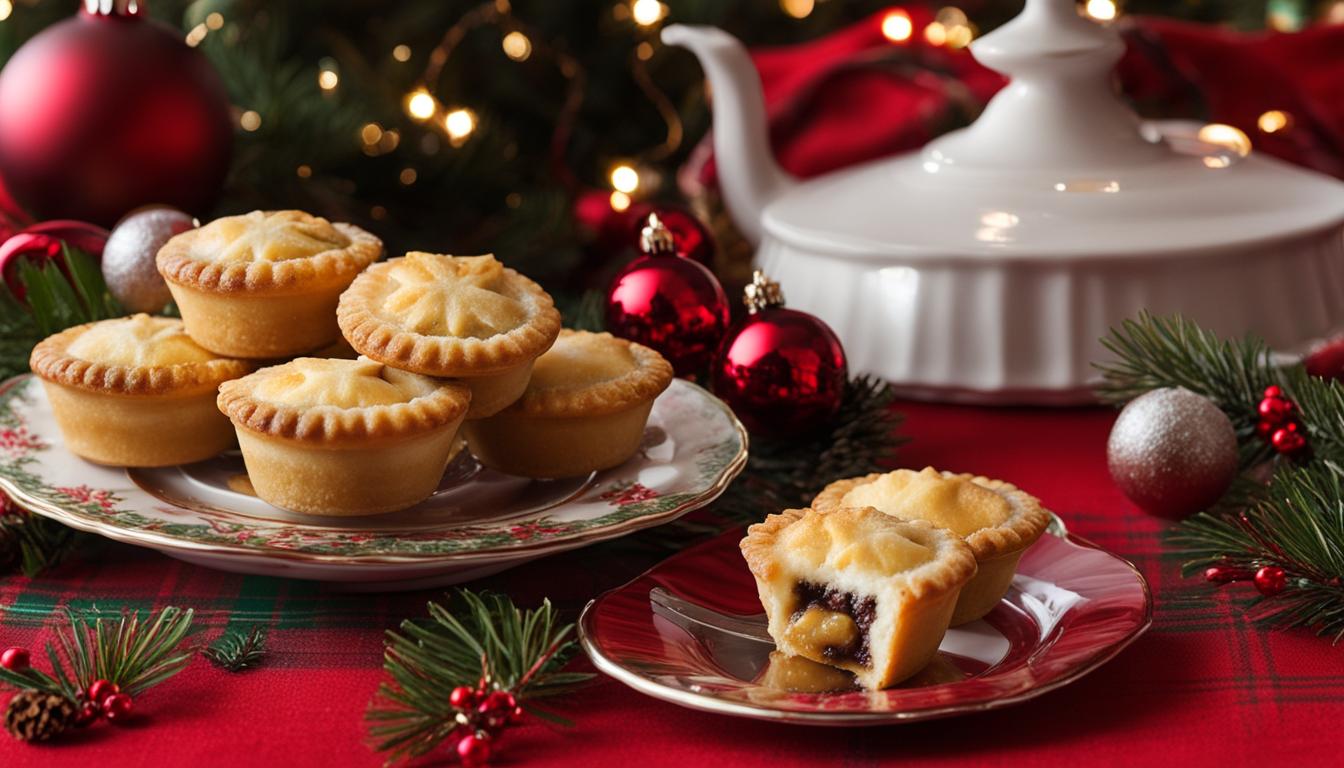
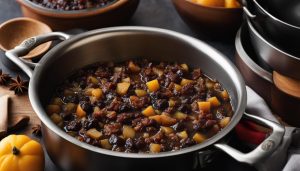
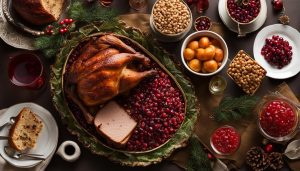

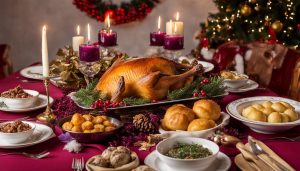



What i don’t understood is in reality how you’re no longer actually much more smartly-preferred than you may be now. You are very intelligent. You recognize therefore considerably with regards to this subject, produced me in my view consider it from a lot of numerous angles. Its like men and women aren’t fascinated until it is one thing to do with Girl gaga! Your own stuffs great. At all times care for it up!